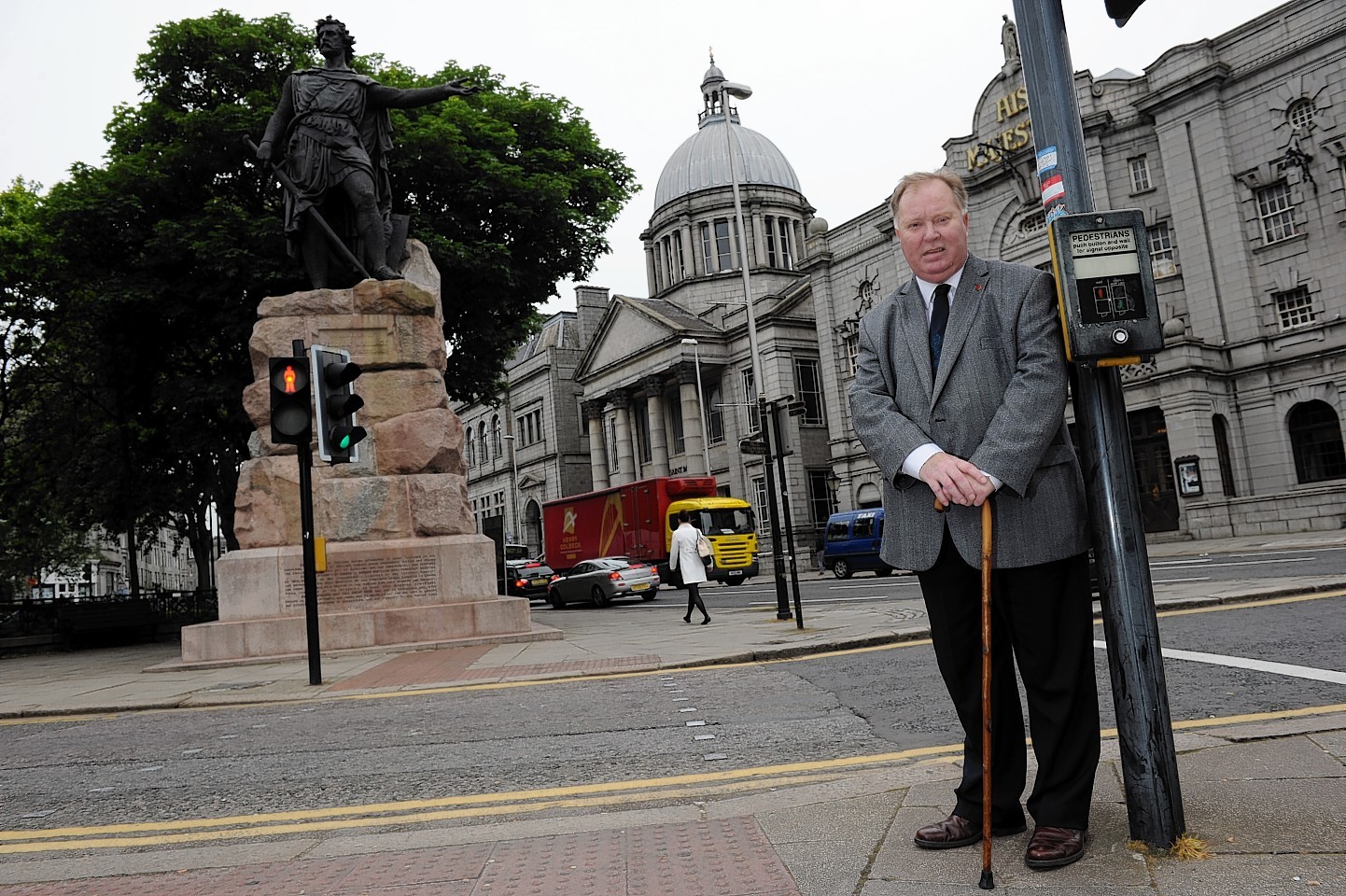Plans to remove a pelican crossing in Aberdeen’s city centre have prompted safety concerns.
Council officials are proposing to ditch the pedestrian walkway on a slip road connecting Rosemount Viaduct with Union Terrace, opposite His Majesty’s Theatre.
A report to a meeting of the city council’s enterprise, strategic planning and infrastructure committee next week says that usage of the crossing is “minimal”.
An assessment carried out predicted there would be no detrimental effect on road safety.
The report also states that £300 a year would be saved by removing the traffic lights.
However, ward councillor Bill Cormie yesterday questioned the assessment on road safety.
He said: “The traffic comes round there at such a speed off the viaduct, including buses, and sometimes without indicating.
“I cross there almost every day, and I fear that it could cause a serious accident.
“There are a lot of older folk crossing at that section of road, they press the buzzer and wait. It is a well used crossing, and the money being saved is next to nothing.”
The committee report, by assistant technical officer John Coyle, states that studies were carried out to determine how often the crossing was actually used.
Over the course of six visits, the average number of pedestrians crossing was 218. However, an average of 84% of those crossed outwith the designated crossing area.
Of the remaining 16% who followed the route of the crossing, a majority crossed without pressing the push-button, the report said.
It is not known whether pedestrianisation plans for Broad Street had any bearing on the proposals.
Buses and other traffic would be re-routed along Union Terrace and onto Rosemount Viaduct and up Schoolhill under the plans to accommodate a civic square outside Marischal College. It may be considered that removing the crossing would help speed up the flow of traffic.
Councillors will discuss the pelican crossing plans at a meeting on Tuesday, June 3.
